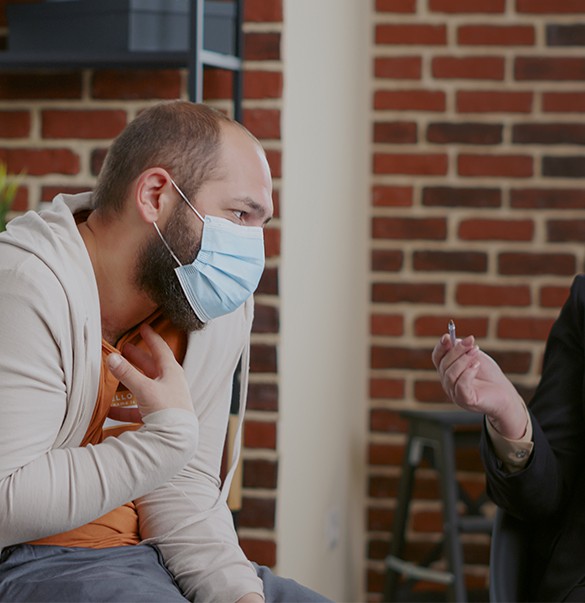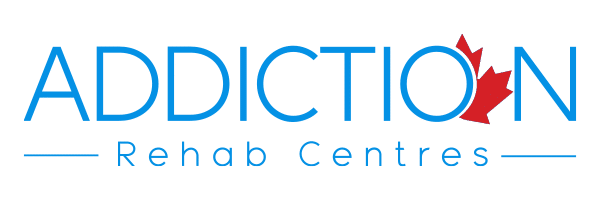Intervention
One of the tragic realities of drug addiction is that addicts are often the last to know that they have a problem. And by then, it may be too late. Addiction-related deaths have more than doubled since the 1980s, with about a quarter of death now being directly attributable to some form of addiction. The loved ones of addicts are frequently terrified about what will happen next, and rightly so.
Interventions are staged in order to grab the attention of an addict, convince him or her to seek help, and establish clear consequences for a refusal to pursue professional help.


What is an Intervention?
Addiction often begins with peer pressure to try alcohol or drugs. Interventions attempt to harness the power of peer pressure to achieve something more positive. During an intervention, the people closest to the individual describe how the addiction has affected them. They appeal to the addict to seek help, and state the consequences to the relationship if help is not accepted. For example, a wife might talk about how her husband’s addiction has affected their children, and state that she will file for divorce if he is unwilling to seek help.
Interventions are controversial, because they corner a vulnerable person who may not react in predictable ways. Some families fear that an intervention will destroy their relationship with the addict, or that the addict will respond with violence or destruction of property. But research shows that, when done properly, interventions work, particularly for addicts who have a history of relapse.
Planning Your Intervention
The Planning Stages
The intervention should include only those people closest to the addict, who are fully committed to getting the addict help. People who do not believe that addiction is a disease, who do not think the addict needs treatment, or who have not been personally affected by the addiction, have no place at the intervention. If you have any doubts about including someone in the intervention, consider asking them how they plan to react if the addict chooses not to seek help.
Ideally, you should work with a trained interventionist who is not personally invested in the outcome, and who has the professional training to bring order to the procedure. In many cases, the presence of an expert who is seen as an authority figure will encourage a volatile addict to stick around.
You should plan each and every step of the intervention prior to diving in, to minimize the risk of unexpected developments or an angry outburst by the addict.


Intervention Location and Setup
In almost all cases, the intervention should be staged without prior knowledge on the part of the addict. This guarantees the individual’s presence, and the element of surprise can encourage him or her to stay, if for no other reason than to satisfy his or her curiosity.
Select a location that is comfortable and safe. Avoid places where there is little privacy, or where children or loud pets have to be sequestered in another room. Have basic comforts like water and snacks on hand, and make sure the room is at a comfortable temperature. The goal of an intervention is to make the addict uncomfortable with his or her choices—not just generally uncomfortable!
The Intervention Procedure
Effective interventions follow a very specific protocol. Talk to your interventionist if you have any questions, and remember that each situation is different. Rely upon your interventionist’s experience, training, and wisdom if she or he recommends a different procedure:
- The introduction. During this phase, someone – usually the interventionist – explains to the addict that he or she is at an intervention, and the people present would like to discuss the addiction.
- Discussing the effects of the addiction. Each member of the group shares the specific ways in which the addict’s choices have harmed him or her. The goal is not to make the addict feel bad, but to draw their attention to specific, irrefutable instances of harm caused by the addiction. The process usually begins with the person least close to the addict, then closes with the person the group thinks will have the most emotional impact – often a child or spouse.
- Encouraging the addict to seek help. During this phase, the interventionist or a member of the group will explain that addiction is a disease, and then encourage the addict to seek help. In most cases, the group will have already selected a facility, so all the addict has to do to get help is agree to pursue treatment.
- Outlining the consequences for refusing help. An intervention is a chance for each member of the group to stop enabling the addiction. This means every person must outline how his or her relationship to the addict will change if help is refused. Without these consequences, loved ones will remain in the trap of the addiction, and can continually be manipulated. Common consequences include withdrawal of shelter or financial support, or cessation of contact with the addict.


From there, it is up to the addict to decide whether or not to accept treatment. You should not argue with the addict or become angry; simply listen to his or her thoughts, and calmly move forward. Recognize that no addict can be forced to get clean; your loved one will only pursue sobriety when he or she is fully ready.
After the Intervention
All you can do after the intervention is wait and hope that the intervention has worked. Many addicts initially decline treatment, but subsequently change their minds. Don’t lose hope, but remember that you can be happy and whole even your loved one refuses help.
What if the Intervention Doesn’t Work?
Not all interventions work, but for the addict to have any chance of recovering, you must adhere to the consequences you stipulated for refusal of help. Going back on what you said during the intervention will enable the individual to continue with his or her addiction. Ultimately, the purpose of an intervention is to make staying addicted seem like the more difficult choice than seeking help. Therefore, it is imperative that loved ones do not make it easy for the addict to avoid treatment.
If you have a loved one struggling with an addiction, Addiction Rehab Centres Canada can help you find a rehab centre that has trained interventionists.
Further Reading:
Find an Interventionalist
Drug Rehab Program
Prescription Drug Rehab
Alcohol Rehab
Understanding Drug Addiction
Drug Addiction: Symptoms & Signs
Am I an Addict?
Talk To One Of Our Specialists By Calling 1-855-885-4747
